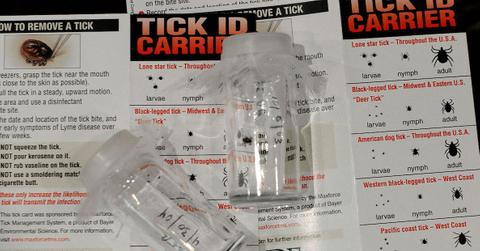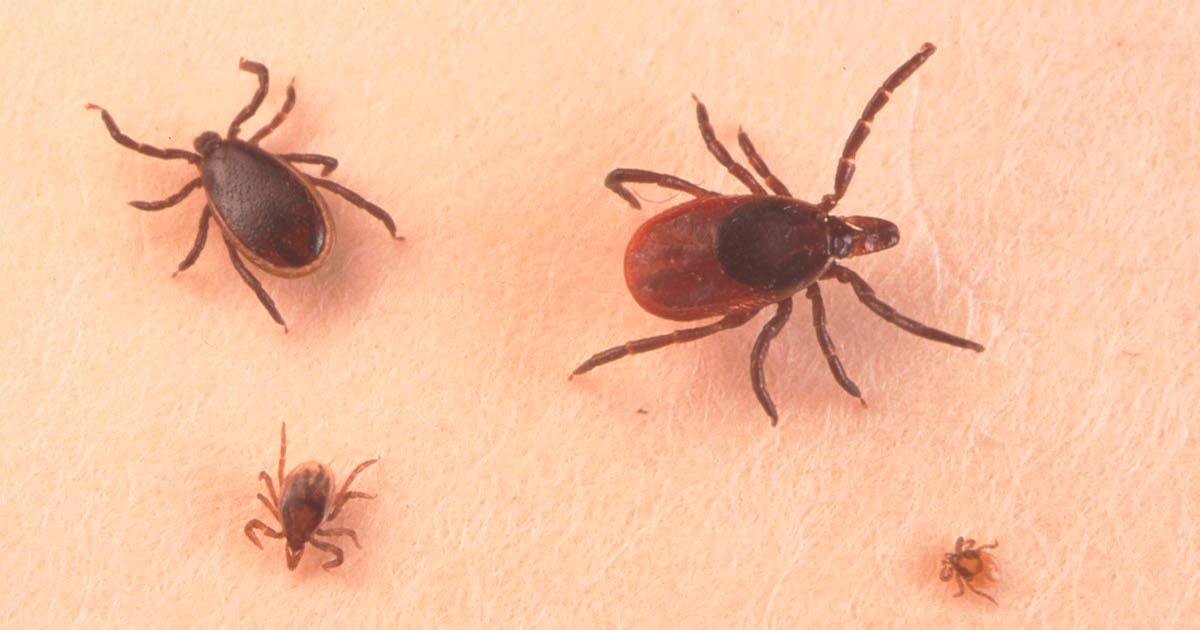Do All Ticks Carry Lyme Disease?
Published June 9 2021, 1:21 p.m. ET

Lyme disease is an eternal concern for pets and humans alike — it’s debilitating, dangerous, and in some cases, even deadly. But even if you're educated on the dangers of ticks and make sure to "tick check" after every outing, how can you tell which ticks carry Lyme disease and which don’t? More importantly, how can you tell if a tick is carrying something even worse?
There are many different types of ticks.
There are over 850 species of ticks worldwide, and although nearly all of them feed on the blood of other animals, not all of them transmit Lyme disease. According to Hackensack Meridian Health, the main ticks that spread Lyme disease are called Ixodes ticks.
Two distinct species of ticks from the U.S. carry Lyme disease, and the most common of those is called Ixodes scapularis, aka the deer tick. Deer ticks primarily live in the northeast and northern parts of the midwest. They tend to spread Lyme disease more frequently than the other species, Ixodes pacificus or the western blacklegged tick, which is commonly found throughout the Pacific Northwest.

Identifying the most common Lyme-carrying tick: the deer tick.
According to TickLab, deer ticks can be identified by their reddish-brown bodies and black shields on their backs. The tick’s mouthparts are long and thin, and like most arachnids, Ixodes scapularis have eight legs. Looks notwithstanding, however, you probably should be wary of any tick you happen to find feeding on you and remove it accordingly.
What other dangerous ticks are out there?
Although deer ticks the most common and notorious type of tick in the U.S., there are many other disease-carrying ticks like the Lone Star, American dog, and Asian longhorn ticks. These ticks can carry anything from Ehrlichia chaffeensis to Ehrlichia ewingii (both cause human ehrlichiosis), to tularemia, to STARI, which manifests with a rash, fatigue, headache, fever, and muscle pains.

How ticks spread Lyme disease:
According to the CDC, ticks spread the Lyme disease bacterium, Borrelia burgdorferi, by biting and feeding on humans. They attach from a loose stalk of grass or foliage, before crawling into a hard to see, blood-rich part of the body like the groin, armpit, or scalp. Ticks that are found and unattached quickly usually don’t transmit the bacteria, but ticks attached for anywhere from 36 to 48 hours will easily spread the disease.
What does Lyme disease do to you?
Though the signs and symptoms of Lyme disease vary, there is one common thread among them: these symptoms usually come in stages. They usually start with either the identification and removal of a tick or from a small, red bump, similar to a mosquito bite. Note that, according to the Mayo Clinic, these tick bite bumps don’t always indicate the presence of Lyme disease, just of a previous tick.
About a month later, you’re likely to experience other symptoms such as an expanding red area coming out from the bite that often clears in the center, forming a bull’s eye pattern. This skin rash can expand to 12 inches in diameter. You can also develop a fever or chills, body aches, headaches, or neck stiffness and swollen lymph nodes.
You should see a doctor if you experience any of these symptoms. If Lyme disease goes untreated, you could develop debilitating joint pain, swelling, and even neurological problems, such as Bell’s palsy or impaired muscle movement. Remember: the earlier you begin treatment, the less severe your bought with this tough disease will likely be.